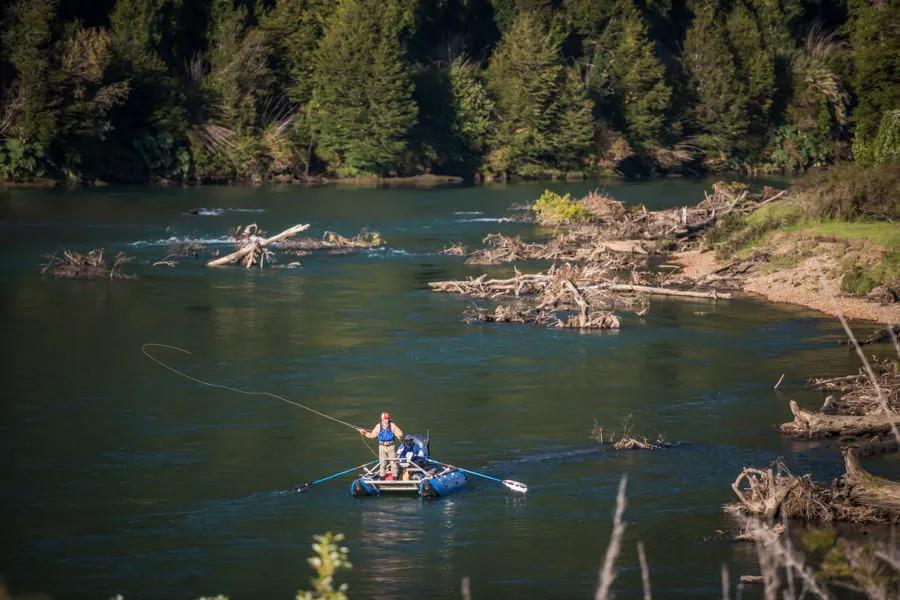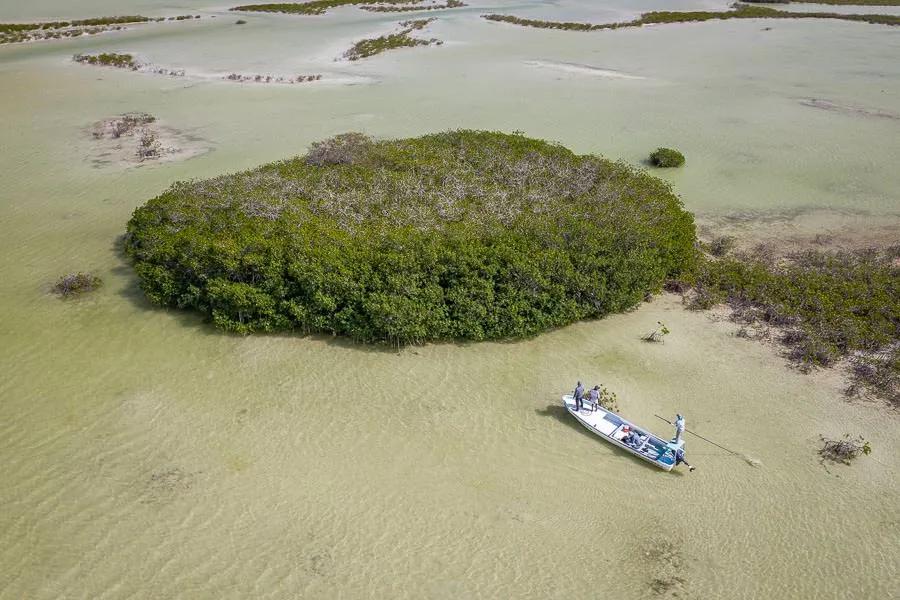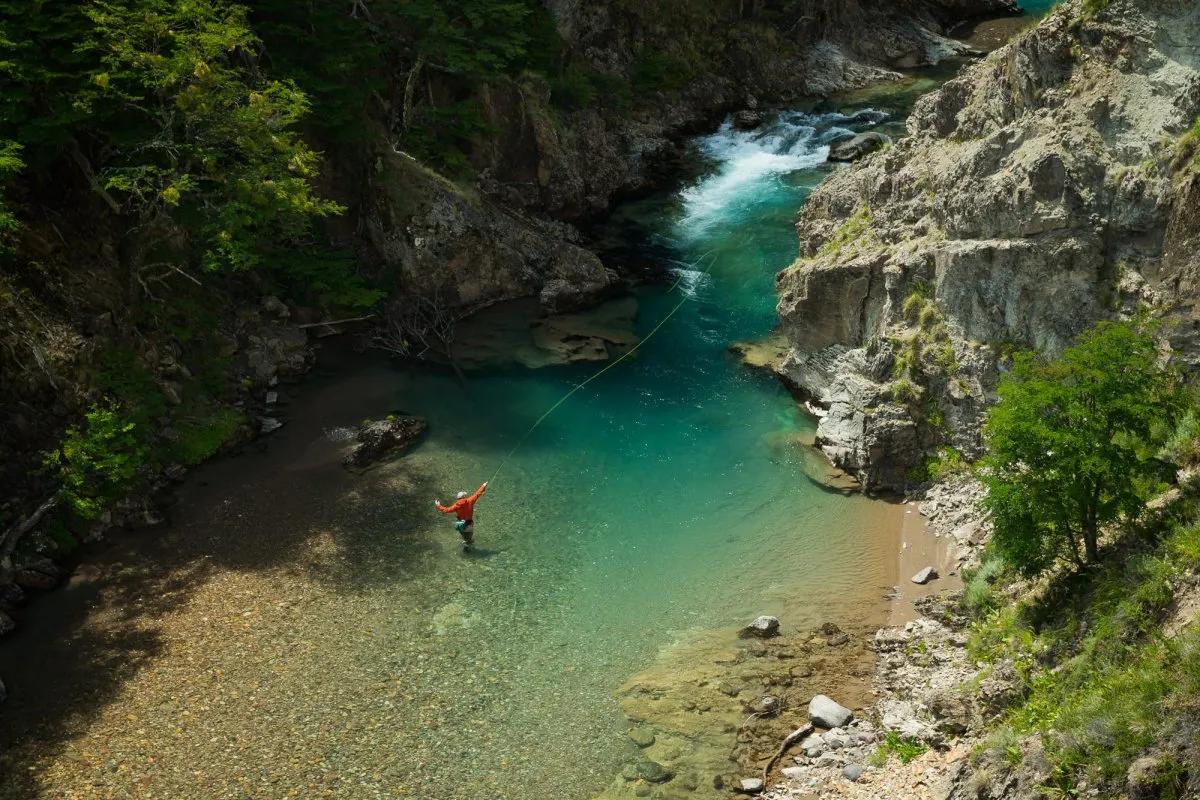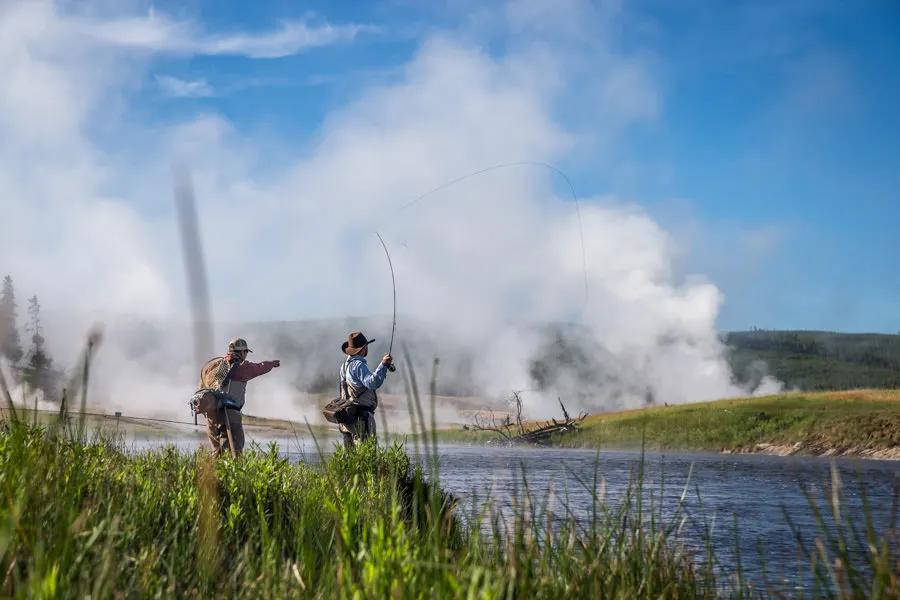
Do you have a friend that seems to consistently put more fish in the net that you? It would be nice to know what separates an average angler from a super charged, fish catching cyborg? When it comes to fly fishing in Montana or in the West on some larger rivers or streams, being a good caster is paramount to success. Like most sports, its the little things that add up to make a difference. One of the most important elements to being a successful angler is to make your "first cast count." The idea is simple. The first opportunity to present your fly to your target fish, is the best opportunity. The more the fish sees the fly and doesn’t eat, the less likely it will eat the fly on successive presentations.
Be sure to make the ‘"first cast count."
This idea holds true for all target species -- trout, bass, steelhead, salmon, carp, bonefish, permit, tarpon, and more. All of these fish have great vision and even better instincts to stay away from danger. Repeating the cast, even a well placed cast with the ideal fly, is enough to turn a fish from feeding mode to evasion mode. Once this happens the opportunity for catching that fish has come and gone. Great anglers understand this simple concept and employ some simple strategies to improve the quality and consistency of that first cast.
Here are a few secrets that can help you make your first cast count. I hope these tips help you the next time the opportunity occurs.

Practice casting: It is always a good idea to practice your casting before you head out on your next fly fishing trip. Time spent focusing on your cast will yield rewards on the water. Practice for both distance and accuracy. Accuracy is by far the most important element of casting. It doesn’t matter what species you’ll be fishing for, if you can present the fly in the perfect location, you’ll increase your catch rate. A good way to practice is with hula-hoops and frisbees. Drop them on a grassy lawn or field at varying distances. Do this exercise under different weather conditions, especially in windy conditions. In the wind, force yourself to practice with the wind at your side and in your face… try to create “real world” conditions. Improving your overall casting increases the chances that your first cast will be presented accurately.
Plan your cast: This might be the most important tip of the day. Armed with the knowledge that your first cast is the most important cast, make sure that you plan your presentation. Understand what is the best angle and distance to make your cast. If you are on the flats and you spot a huge bonefish moving in at 80 feet, you need to know that your most accurate cast is at 30 feet. Avoid casting too early, wait for the fish to get closer, and then make a more accurate cast at 30 feet compared to a less accurate cast at 60 feet. If you are on a trout river and spot a large fish rising, plan which angle will give you the best drift over the fish. Then carefully wade into position before making the first cast. If you are float fishing and there is some great looking water coming up, hold up casting in the snag infested water as you approach and save your cast for the good stuff. For every scenario start asking yourself "what would the perfect cast be" and then have the patience and planning to attempt that cast.

Relax: Try to stay calm when you are sight casting. This is easier said then done and it is hard to keep your cool when the guide exclaims "big permit at 1 o’clock." Staying relaxed is the most important aspect of making your first cast count. “Buck Fever” isn't unique to hunters and unfortunately the only way to eliminate buck fever is to spend more time on the water. The more chances that you interact with big fish the more accustomed you will become to "expect" those opportunities. So the good news is your homework is to go fishing more often.
Focus on the target: If you ski, snowboard, or ride a mountain bike then you know that you want to always focus on where you want to go, not where you don’t want to go. If you stare at the tree you don't want to hit, you’re practically guaranteed to hit it. The same holds true for casting a fly. If you stare at the grass bank, you’ll snag it. If you focus on where you want the fly to land, you’re more likely to hit that spot.
Measure your cast: If you blind cast without a plan, you will likely over or undershoot your target. There are some strategies that you can employ that will help you produce a more accurate length of your cast. If you are trout fishing make a few false casts slightly away from your target. If a big brown is sipping tricos along the bank, false cast about 10 feet upstream to get an idea of how much line you have. Then rotate your cast just before delivering the presentation. On the saltwater flats, strip your line off your reel in advance and make a few test casts. Strip the line back to the deck of the boat but don't reel it in. This allows you to know about how long the cast will be if you shoot all of the line as a big bonefish, permit, or tarpon approaches.

Delicate delivery: Gently dropping the fly in place is very important and applies whether you are casting a delicate dry fly at a rising trout or a small shrimp imitation at a cruising bonefish in skinny water. You want to deliver your cast so there is just enough energy in the cast to turn over the fly, but not so much energy the fly splats down on the water. Practice making these casts when you can and focus on the soft presentation when you are making that first cast.
These 6 tips will help you utilize your first cast with more accuracy and the perfect presentation. That next Montana trout, bonefish or permit won’t be able to refuse your offering. Good Luck!!!

